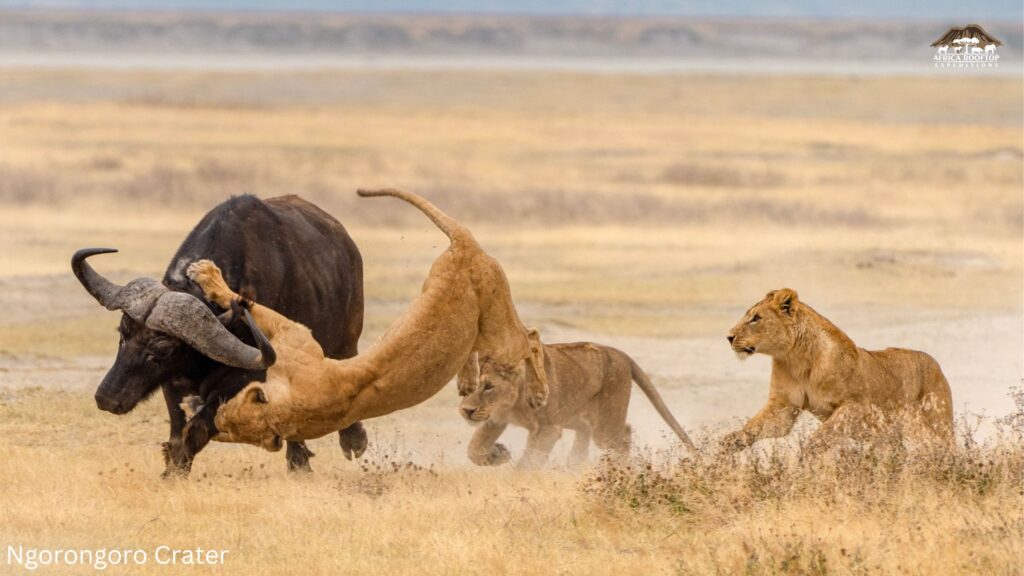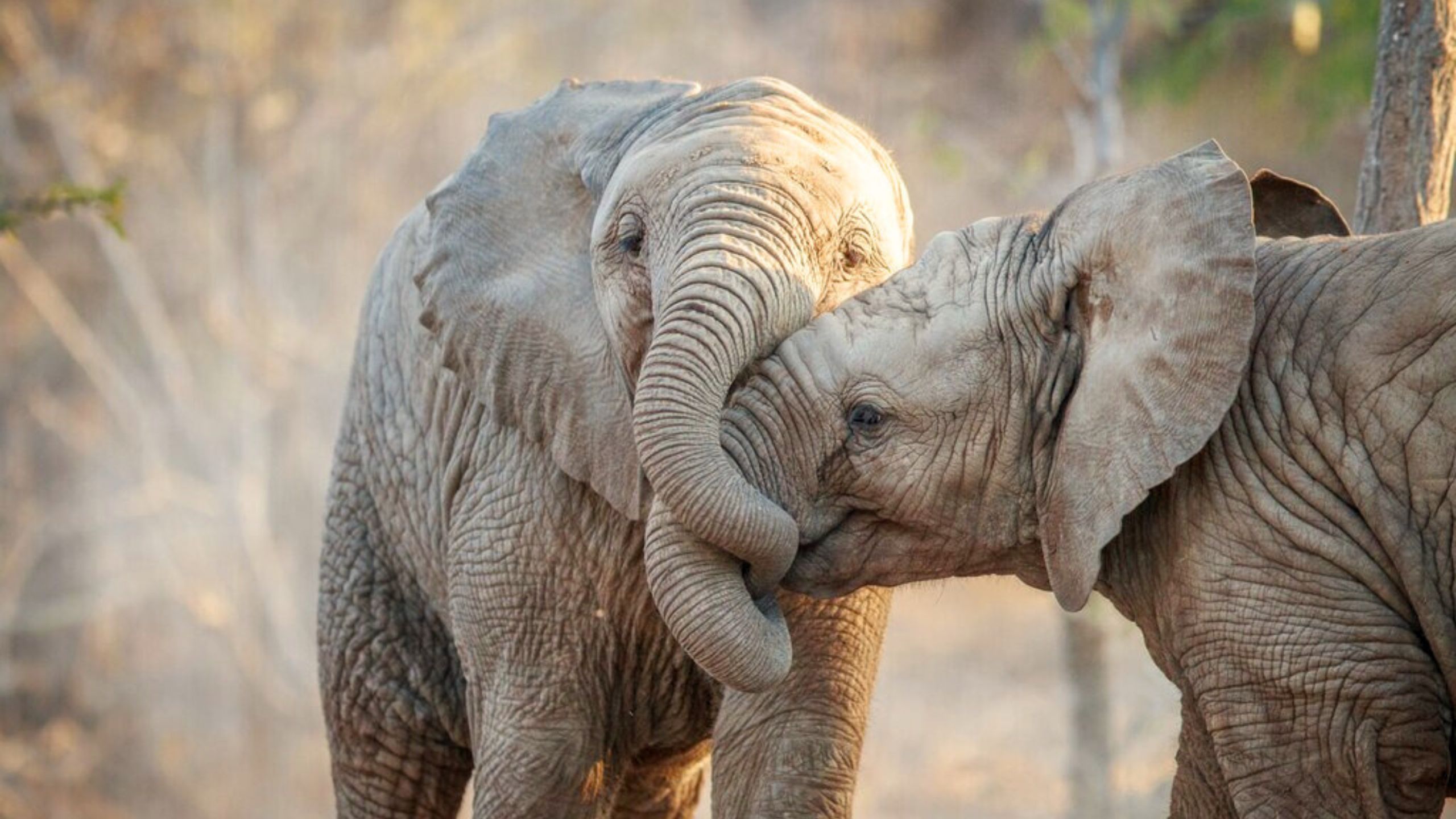The Ngorongoro Crater is a magnificent natural wonder located in northern Tanzania, East Africa. It is often referred to as the “Eighth Wonder of the World” and has gained international recognition for its breathtaking beauty and unique ecosystem.
Spanning an area of approximately 260 square kilometers (100 square miles), the crater is the world’s largest unbroken caldera and a UNESCO World Heritage Site.
Formation and Geological Significance:
The Ngorongoro Crater was formed around 2 to 3 million years ago when a massive volcano, possibly larger than Mount Kilimanjaro, collapsed inward due to volcanic activity. The result was a vast crater with walls that soar up to 600 meters (1,970 feet) high. The crater floor, which spans about 260 square kilometers, is relatively flat and encompasses a variety of habitats, including grasslands, forests, and a large saline lake called Lake Magadi.

Ecological Diversity:
The Ngorongoro Crater is renowned for its extraordinary biodiversity and is often referred to as an “Ark of Life.” It supports an incredible concentration of wildlife, including over 25,000 large animals such as elephants, lions, zebras, buffalo, wildebeest, and hippos. It is also home to one of the densest populations of predators in Africa, with an estimated 500 lions residing within the crater.
The crater’s varied habitats support a wide range of species, including more than 500 bird species, making it a haven for birdwatchers. The Lerai Forest, located on the crater floor, is a unique and important habitat that shelters a variety of plant species, including ferns, fig trees, and yellow fever trees.
The Great Migration:
One of the most remarkable events that occur within the Ngorongoro Crater is the Great Migration. This annual phenomenon involves the movement of massive herds of wildebeest and zebras as they search for fresh grazing lands. The migration typically takes place between the Serengeti National Park and the Ngorongoro Conservation Area, including the crater. Witnessing this awe-inspiring spectacle is an unforgettable experience for visitors.

Indigenous Communities:
The Ngorongoro Conservation Area is not only a wildlife sanctuary but also home to indigenous tribes, most notably the Maasai people. The Maasai have lived in the area for centuries, preserving their traditional way of life and cultural heritage. Some Maasai communities still graze their livestock within the conservation area and maintain their unique customs and rituals. Visitors to the Ngorongoro Crater have the opportunity to learn about the Maasai culture through village visits and interactions with the local community.
Conservation Efforts:
Preserving the fragile ecosystem of the Ngorongoro Crater is of utmost importance, and several conservation efforts are in place to ensure its protection. The Ngorongoro Conservation Area Authority (NCAA) manages the area and implements measures to maintain the delicate balance between wildlife conservation and tourism. Strict regulations are enforced, such as limiting the number of vehicles allowed inside the crater at any given time.

Tourism and Safari Experiences:
The Ngorongoro Crater attracts a large number of tourists from around the world who come to witness its natural splendor and experience thrilling safari adventures. Numerous lodges and campsites are located on the crater rim, offering breathtaking views and providing visitors with comfortable accommodation options.
Safari drives into the crater are a popular activity, allowing visitors to explore the diverse landscapes and observe the abundant wildlife up close. Experienced guides and rangers accompany visitors, ensuring their safety and providing insightful information about the flora and fauna.
Beyond the crater, the Ngorongoro Conservation Area offers additional attractions for visitors, including Olduvai Gorge, a significant archaeological site where fossils and tools dating back millions of years have been discovered. The Empakaai Crater and Olmoti Crater are also worth exploring, offering scenic hiking trails and stunning vistas.
Challenges and Future Sustainability:
While the Ngorongoro Crater remains a symbol of natural beauty and wildlife conservation, it faces several challenges in terms of sustainable management and maintaining the delicate balance between tourism and conservation. Balancing the needs of the Maasai communities with the preservation of the ecosystem is an ongoing endeavor.
Efforts are being made to reduce the ecological impact of tourism, such as promoting responsible tourism practices, raising awareness about conservation, and supporting local communities through community-based tourism initiatives. These measures aim to ensure the long-term sustainability of the Ngorongoro Crater and its surrounding areas.

The Ngorongoro Crater stands as a testament to the remarkable beauty and biodiversity found in Tanzania. Its unique geological formation, diverse ecosystems, and abundant wildlife make it a truly remarkable destination for nature enthusiasts and safari-goers.
As efforts continue to preserve and sustain the delicate balance of this extraordinary ecosystem, the Ngorongoro Crater will remain a cherished natural treasure for generations to come.
🌍 Unleash Your Adventurous Spirit on an African Safari! 🐘🦁
Ready for a thrilling escape? Dive into the mesmerizing world of African safaris and discover untamed landscapes teeming with exotic wildlife. Click here : Go2AfricaRoofTop to embark on an unforgettable journey where lions roar and elephants trumpet, where giraffes gracefully roam and cheetahs sprint across the golden plains. 📸🌿
Experience heart-pounding moments as you witness predators on the prowl and marvel at the grace of herbivores in their natural habitat. Immerse yourself in the rich tapestry of sights and sounds, from golden sunsets casting a warm glow to the symphony of wildlife echoing through the savannah. 🌅🦒
This is your chance to capture captivating photographs and create memories that will last a lifetime. Don’t miss out on the adventure of a lifetime. Click here : Go2AfricaRoofTop to start planning your African safari today! 🗺️✈️🦁








